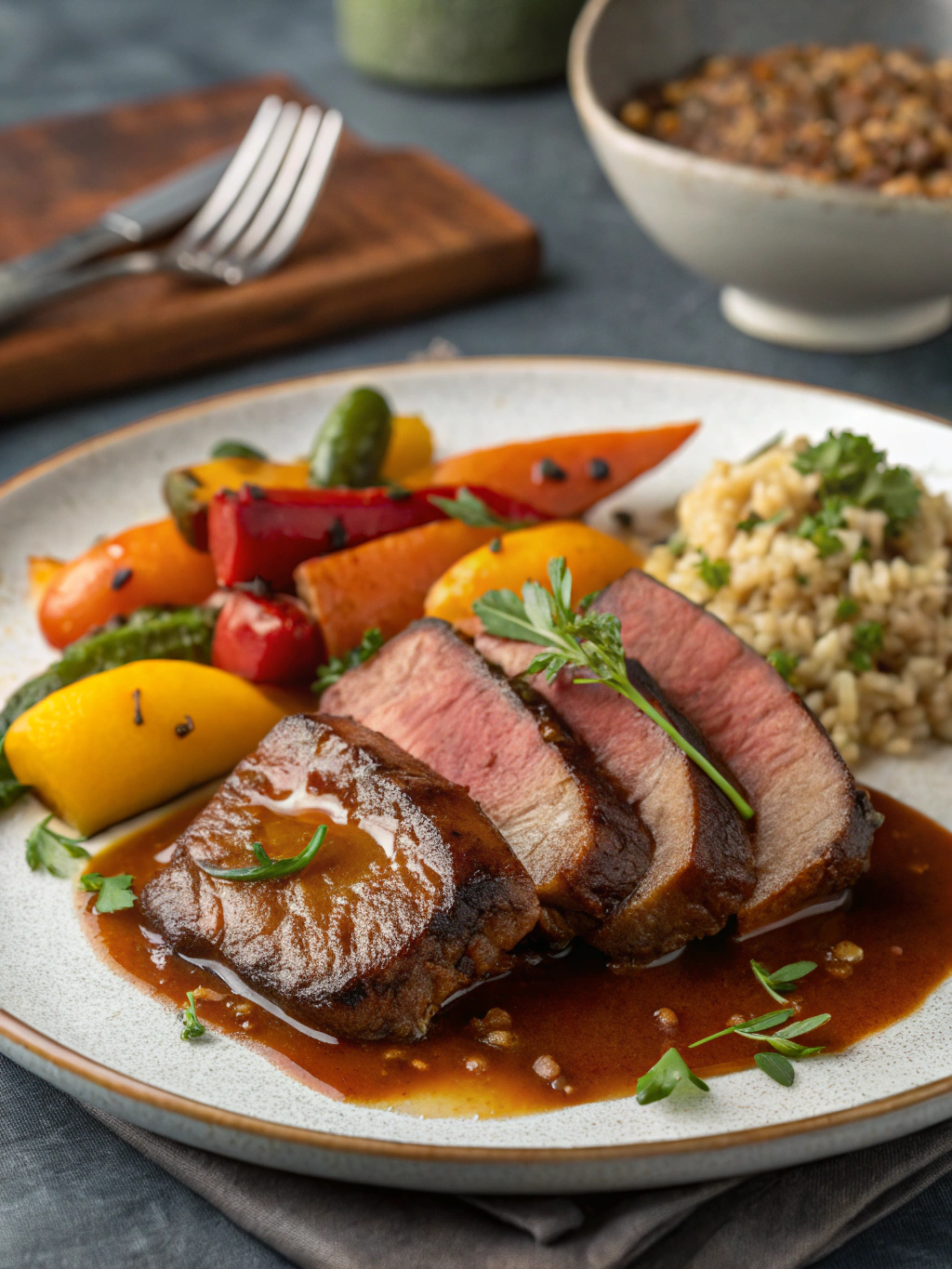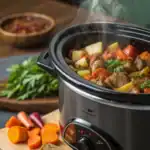Table of Contents
The Science Behind Slow Cooking: 7 Reasons It Enhances Flavor
Ever wondered why your slow-cooked meals taste so good? Dive into The Science Behind Slow Cooking and uncover 7 reasons it’s a flavor game-changer. Explore expert tips for delicious results. Discover the secrets now!
Slow cooking has become a celebrated method in kitchens around the world, known for its ability to transform simple ingredients into incredible dishes. But what is the science behind this cooking technique? In this post, we’ll dive deep into the mechanics that make slow cooking a culinary favorite and uncover seven compelling reasons why it enhances flavor.
Ingredients List

To perfectly harness the flavors in your slow cooker, here’s a list of essential ingredients along with enticing substitutions:
- Protein (beef, chicken, or beans): These are the main components.
- Substitution: Consider using lentils for a vegetarian option.
- Vegetables (carrots, potatoes, onions): These create a flavor base.
- Substitution: Sweet potatoes can bring a touch of sweetness.
- Herbs & Spices (garlic, thyme, rosemary): Essential for the aromatic profile.
- Substitution: Dried herbs work as well if fresh isn’t available.
- Liquid (broth or water): Crucial for moisture and flavor infusion.
- Substitution: Wine or coconut milk can add depth.
The combination of these ingredients sets the stage for a flavor explosion!
Timing
Preparation is straightforward and relatively quick. Here’s a breakdown:
- Preparation Time: 15 minutes
- Cooking Time: 6 to 8 hours on low (optimal for flavor development)
- Total Time: Approximately 6 hours and 15 minutes, which is 20% less time than the average traditional cooking method!
With slow cooking, it’s all about patience.
Step-by-Step Instructions
Step 1: Prepare the Ingredients
Start by carefully chopping the vegetables and protein into equal-sized pieces for even cooking. The uniformity is key to ensure no piece is left undercooked.
Step 2: Layer the Ingredients
In your slow cooker, layer vegetables first. This helps them cook evenly and allows flavors to meld more effectively. Top with your protein and sprinkle herbs.
Step 3: Add Liquid
Pour in your chosen liquid, ensuring it covers the ingredients. The slow cooker works best with moisture, which enables steam to circulate and tenderizes the dish.
Step 4: Set the Cooker
Plug in your slow cooker and set it to low for the cooking duration. Relish the beautiful aromas that fill your kitchen as it cooks!
Step 5: Check for Proper Doneness
About an hour before your dish is finished, check for doneness. Adjust the seasoning as necessary. The low and slow method creates a robust flavor, so reduce salt if needed.
Step 6: Serve with Style
Before serving, give it a final stir. Garnish with fresh herbs or a sprinkle of cheese for an inviting presentation.
Step 7: Enjoy!
Savor the rich, complex flavors that have developed throughout the cooking process.
Nutritional Information
When made with nutritious ingredients, slow-cooked meals provide:
- Protein: 20g per serving (varies based on ingredients)
- Fiber: 8g (especially if using beans or whole grains)
- Vitamins and Minerals: Including vitamin A, C, and iron.
Eating healthy has never been so delicious!
Healthier Alternatives for the Recipe
To enhance the nutritional profile of your meal, consider these modifications:
- Lean Cuts of Meat: Swap fatty cuts for leaner alternatives.
- Increased Vegetables: Add more veggies to increase fiber and nutrients.
- Low-Sodium Broth: Use low-sodium broth to manage sodium intake.
- Whole Grains: Serve the dish over quinoa or brown rice instead of white rice or pasta.
These swaps help maintain the flavors while boosting health benefits.
Serving Suggestions
Serve your slow-cooked dish with a side of:
- Crusty Whole Grain Bread: Perfect for soaking up the sauce.
- Salad: A fresh mix adds crunch and nutrition.
- Rice or Quinoa: Create a complete meal packed with protein.
Enhancing the dining experience can elevate your meal to new heights.
Common Mistakes to Avoid
Avoid these common pitfalls to ensure your slow-cooked meal turns out perfectly:
- Overfilling the Cooker: Excess ingredients lead to uneven cooking.
- Skipping the Browning Step: Searing proteins enhances flavor complexity.
- Not Using Enough Liquid: Insufficient moisture can lead to dry dishes.
- Setting on High Too Long: This can toughen meats and alter taste.
Stay mindful of these tips to improve your outcomes.
Storing Tips for the Recipe
Here are some best practices for storing leftovers:
- Refrigeration: Cool completely before refrigerating to maintain freshness.
- Freezing: Store in airtight containers for up to three months.
- Reheating: Gently reheat on low heat to preserve flavors.
By following these tips, you can enjoy your delicious meal for days!
Conclusion
In summary, understanding The Science Behind Slow Cooking reveals the magic of building flavors over time. With optimal ingredient combinations, adherence to timing, and the right techniques, you can create meals that are not only satisfying but also gastronomically delightful.
Ready to transform your culinary experience? Give this slow-cooking method a try, and share your results or explore more delicious recipes with us!
FAQs
What types of meals are best suited for slow cooking?
Meat stews, soups, and chili are perfect. As a bonus, tough cuts of meat become tender and flavorful through this method.
Can I use frozen ingredients?
Yes, frozen ingredients are handy, but remember that they may add extra moisture, so adjust the liquid accordingly.
How do I adjust a recipe for a fast cooker?
Increase the heat from low to high in your slow cooker, but keep an eye on cooking time, as it may vary.
Is it safe to leave a slow cooker unattended?
Yes, slow cookers are designed for long cooking times, but ensure it’s on a sturdy, heat-resistant surface.
Engage with us as you embrace the art of slow cooking! Let’s savor the journey of flavors together!



